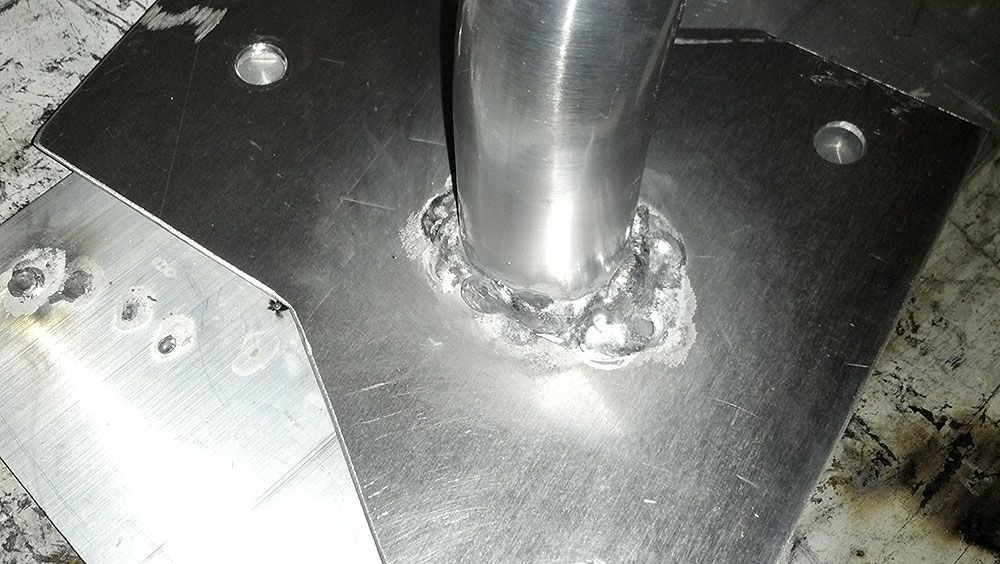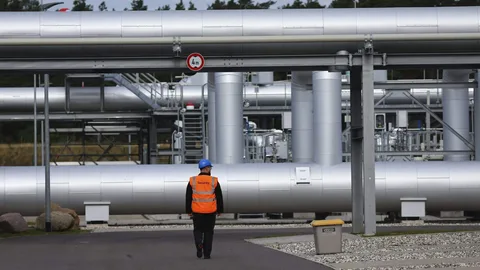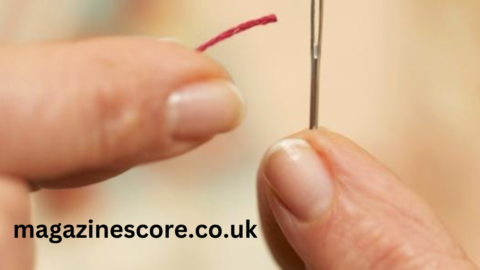TIG welding is a challenging process that requires precision, skill, and understanding of the metal’s unique properties. Aluminum’s high thermal conductivity and formation of a tough oxide layer even makes aluminum TIG welding even more complicated. This begs the question; can you TIG weld aluminum?
Yes, TIG welding aluminum is possible, though requires the welder to adhere to stringent techniques to create high-quality welds. This article covers the key considerations and steps for successfully TIG welding aluminum.
Key Considerations of TIG Welding Aluminum
Generally, TIG welding relies on the expertise of the welder to ensure the process attains the desired precision. Still, aluminum is lightweight and highly conductive, among other features necessitating more attention during TIG welding.
Below are critical considerations to keep in mind when performing aluminum TIG welding.
Material Thickness
The thickness of the aluminum part for TIG welding is a crucial factor. Aluminum has high thermal conductivity, meaning it dissipates heat quickly. Therefore, since TIG welding affords the welder more extensive process control, they need to modulate the heat applied during welding, particularly when working with thin aluminum sheets. Excess heat will increase the risk of burn-through. Conversely, thicker materials require more heat to achieve proper penetration. Also, the welder must optimize the amperage settings and use the appropriate filler rod size to accommodate the material thickness.
Aluminum Oxide Layer
Aluminum naturally forms a thin protective oxide layer upon air exposure on its surface. It is this feature that enhances its resistance to corrosion than other metals. However, welders should note that this protective oxide layer often has a higher melting point than the base aluminum metal. Therefore, if not factored into the welding, it may interfere or even affect the process. As a result, the welder should ensure thorough cleaning of the aluminum metal using appropriate cleaners, such as a stainless steel wire brush or mild detergents, before welding. Removing the oxide layer ensures a clean, uncontaminated weld.
AC vs DC Welding Current
While TIG welding is compatible with both alternating current (AC) and direct current (DC), the former is more applicable for TIG welding aluminum. Using AC welding for aluminum allows for a balanced combination of penetration and cleaning action, removing the oxide layers and impurities. In addition, AC allows the creation of a better stable electric arc when TIG aluminum, creating a clean and consistent weld.
Gas Selection
The choice of shielding gas is vital for any form of TIG welding. When TIG welding aluminum, pure argon is often the go-to choice because it provides excellent arc stability and cleaning action. However, a mixture of argon and helium – often in the ratio of 3 to 1 – may suit welding thicker aluminum components, because the addition of helium enhances heat input, leading to deeper penetration.
Choice of Filler Material
The choice of filler rod is essential for achieving a strong and durable weld. Different aluminum alloys require specific filler materials to match the base metal’s properties and avoid potential issues like cracking or porosity. Common filler rods for TIG aluminum welding include ER4043 and ER5356. While the 4043 filler is better suited for general welding, allowing good fluidity and minimizing the tendency to crack, the 5356 variant is more applicable for high-strength applications. Therefore, the welder should ensure careful selection of the filler material that best suits the welding purpose.
Joint Preparation and Fit-Up
Proper joint preparation and fit-up are critical to achieving a successful weld. Aluminum requires a tight fit-up with minimal gaps to prevent excessive heat loss and potential weld defects. Edges should be clean, smooth, and free from contaminants. Proper joint preparation and ensuring tight fit-up help achieve proper fusion and penetration, resulting in a high-quality weld.
Preheating and Interpass Temperature
While we recommend strict heat control when TIG welding aluminum, preheating the aluminum parts, particularly thicker sections, can help reduce the risk of cracking and improve weld quality. Preheating helps ensure that the base metal temperature is uniform, reducing the thermal gradient during welding. It can help prevent thermal shock during welding and improve overall heat penetration. However, it is essential to control the inter-pass temperature to avoid excessive heat buildup, warping and overheating. which can weaken the weld. Proper preheating and controlling inter-pass temperature are crucial for achieving a reliable weld.
Post-Weld Cleaning and Inspection
After welding, cleaning the weld area is essential to remove any residual oxides or contaminants that may have formed during the process. Wire brushing or using an appropriate cleaning agent can help remove surface impurities. In addition, you should inspect the weld for defects like cracks, porosity, or incomplete fusion is crucial to ensure the weld meets the required quality standards. Proper post-weld cleaning and inspection ensure a clean and defect-free weld.
How to TIG Weld Aluminum
Aluminum TIG welding may be generally challenging, considering that it is a manual process, requiring the welder to take charge of the process. Moreover, aluminum, too, poses its own challenges such as high thermal conductivity and its tendency to form a tenacious oxide layer. However, by adhering to the right techniques, we;ders and TIG weld aluminum services can create a high-quality and durable aluminum weld.
Below is a guide to put you through.
Prepare the Work Area and Safety Gear
Before starting out, ensure your work area is clean, well-ventilated, and free from flammable materials. Safety is paramount, so wear appropriate personal protective equipment (PPE), including a welding helmet with a proper shade, flame-resistant gloves, a long-sleeve shirt, and protective eyewear. Aluminum emits harmful UV radiation during welding and adequate protection is necessary to prevent injuries.
Select the Right Equipment
Choosing the correct TIG welder for aluminum is crucial. Remember, AC is the better choice for TIG welding aluminum. Consequently, ensure you select a device that operates this welding mode. Also, ensure your selected equipment has adjustable settings for amperage, AC balance, and frequency to fine-tune the welding process.
Choose the Correct Tungsten Electrode
The choice of electrode is another important criterion for the success of the welding process. Ensure to select either a pure tungsten or zirconiated tungsten electrode. These types are suitable for handling the alternating current used in aluminum welding. Prepare the tungsten electrode by grinding it to a rounded tip; this shape helps maintain a stable arc when welding aluminum.
Set Up the Welding Parameters
Properly setting up the welding parameters is essential for TIG aluminum welding. Start by adjusting the amperage according to the thickness of the aluminum material. A good rule of thumb is to use approximately 1 amp per thousandth of an inch of material thickness. Set the AC balance control to allow adequate cleaning action, which helps remove the oxide layer during welding. Adjust the AC frequency to a higher setting (around 120-200 Hz) to produce a more focused arc and better control over the weld puddle.
Prepare the Aluminum Workpiece
Carefully clean the aluminum material before welding to prevent contamination and achieve a quality weld. Use a dedicated stainless steel wire brush or chemical cleaners specifically designed for aluminum to remove the oxide layer and any oil, grease, or dirt. Ensure the edges to be welded are free from burrs and have a tight fit-up to prevent excessive heat loss and avoid weld defects.
Establish the Electric Arc and Control the Weld Pool
Begin by holding the TIG torch at a 15-20 degree angle from the vertical, positioning the tungsten electrode about 1/8 inch above the workpiece. Use the foot pedal or fingertip control to initiate the arc with a high-frequency start, avoiding contact with the workpiece. Once the arc is established, create a small weld pool by maintaining a steady torch movement and carefully controlling the heat input. Use the foot pedal to adjust the amperage as needed, ensuring consistent weld pool control.
Gradually Add the Filler Material Gradually
Introduce the filler rod into the leading edge of the weld pool at a consistent pace. Feed the filler rod smoothly and steadily while maintaining the arc length and torch angle. To prevent contamination, the filler rod should be melted into the weld pool without directly contacting the tungsten electrode. Maintaining a steady hand and rhythm is essential to achieve a uniform bead profile.
Manage Heat Input and Movement
Heat management is critical when TIG welding aluminum. Excessive heat can lead to warping, burn-through, or a weak weld. Move the torch slowly and consistently along the weld joint while adjusting the heat input with the foot pedal to control the weld pool size. Maintain a tight arc length to ensure proper penetration without overheating the surrounding material. If welding thicker sections, consider using a back-and-forth or weave pattern to distribute heat evenly and achieve full penetration.
After completing the weld, slowly release the foot pedal to taper off the current and allow the weld pool to solidify gradually. This helps avoid creating a crater at the end of the weld, which can lead to cracking. Once the weld is complete, allow the aluminum to cool naturally. After cooling, clean the weld bead using a stainless steel wire brush or chemical cleaner to remove any oxidation or discoloration that may have formed during welding. Inspect the weld for defects such as cracks, porosity, or incomplete fusion to ensure it meets the desired quality standards.
Conclusion
TIG welding aluminum demands careful attention to detail, from understanding the unique metal’s properties to selecting the right equipment and settings. Welders can achieve clean, durable, and high-quality welds by considering material thickness, gas selection, and heat management. Proper preparation, technique, and post-weld care are crucial to overcoming the challenges associated with aluminum, ensuring the finished product meets all quality standards.









